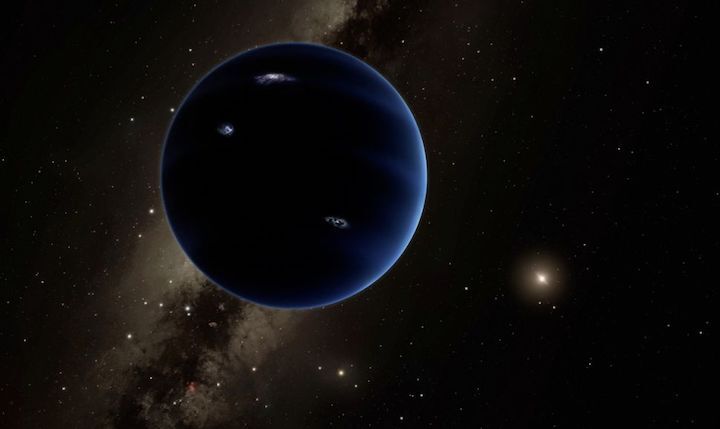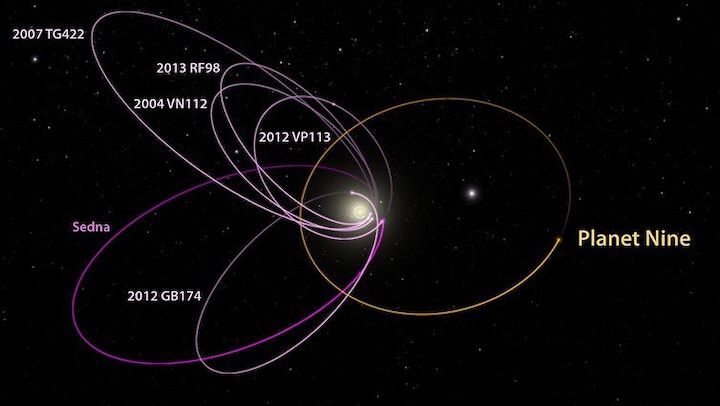19.03.2022
'Results ... are generally consistent with other null searches for Planet 9.'

Artist's illustration of Planet Nine, a world about 10 times more massive than Earth that may lie undiscovered in the far outer solar system. (Image credit: Caltech/R. Hurt (IPAC))
A theorized huge, ninth planet beyond the orbit of Neptune once again wasn't found in a new survey of the solar system's outer reaches.
Astronomers scanned a large portion of the sky using the 6-meter Atacama Cosmology Telescope (ACT) in Chile to search for Planet 9. The quest came up empty, according to the scientists behind the research, although they acknowledged that more sensitive searches would make the result more definitive.
"Their search found many tentative candidate sources — about 3,500 of them — but none could be confirmed, and there were no statistically significant detections," the Harvard-Smithsonian Center for Astrophysics, a participating institution in the research, said in a release March 11.
That said, in the scanned area of the sky, scientists were "able to exclude with 95% confidence" a world with the supposed properties of Planet 9, the release added, "results that are generally consistent with other null searches for Planet 9."
It's the latest in a string of fruitless searches since 2016, when a team of astronomers argued that such a large world might explain a strange large gravitysource in deep solar space. Astronomers Konstantin Batygin and Mike Brown of the California Institute of Technology found six trans-Neptunian objects whose orbits, to the scientists, suggested the presence of a large unseen world far out in the solar system.
The team behind the new research acknowledged how tough the search would be to find such a planet. In theory, Planet 9 appears to be five to 10 times the size of Earth and roughly 400 to 800 Earth-sun distances away from the sun. (The Earth and sun are on average, 93 million miles or 150 million kilometers apart.)

The existence of a roughly Neptune-mass Planet Nine could explain why the few known extreme trans-Neptunian objects seem to be clustered together in space. The diagram was created using WorldWide Telescope. (Image credit: Caltech/R. Hurt (IPAC))
A small planet so far away would be tough to spot in optical searches because the world would see very little sunlight at such great orbital distances. Even searching for infrared or heat signatures is tough, as infrared surveys such as the Wide-field Infrared Explorer (WISE) were unable to find Planet 9 in past attempts, the team noted.
The newly used Atacama Cosmology Telescope usually looks for the signature of the Big Bang, also known as cosmic microwave background radiation. But repurposing the telescope for Planet 9 had value as "its relatively high angular resolution and sensitivity makes it suitable for this type of search," the team stated.
The astronomers looked at 87% of the sky accessible from the southern hemisphere over six years, and then processed the images to search for faint sources. Although the results so far have come up empty, the team acknowledged in the statement that more advanced surveys may yield more information.
The researchers are particularly excited to see the results of a project based in Chile called the Simons Observatory that will also spend most of its time spending the cosmic microwave background.
A study based on the research was published in December 2021 in the Astrophysical Journal.
Quelle: SC
